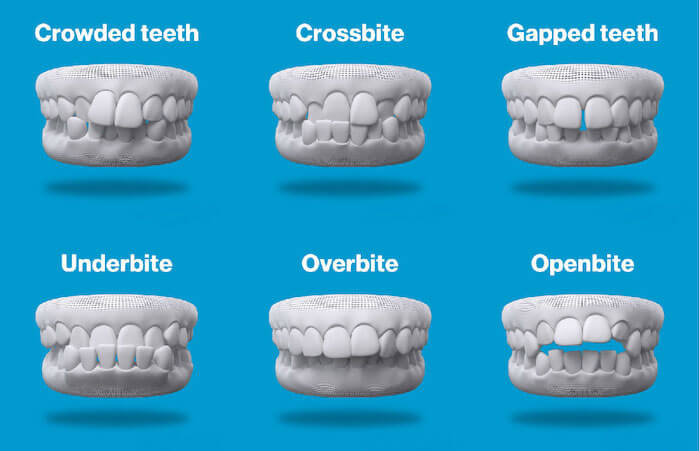Invisalign vs. Conventional Dental braces: Which Choice Is Right for You?
When thinking about orthodontic treatment, the selection between Invisalign and traditional dental braces provides numerous crucial factors that merit mindful examination. Invisalign provides a very discreet alternative with removable aligners, while standard braces give a more noticeable yet reliable option for extreme misalignment. Each choice incorporates distinct advantages and drawbacks associated with looks, comfort, treatment duration, and price. Comprehending these subtleties is essential for making a notified decision that lines up with your personal preferences and way of life. The concern continues to be: which option will ideal meet your orthodontic requirements and expectations?
Summary of Therapy Alternatives

In comparison, standard dental braces include metal brackets and cords that are bonded to the teeth. This method uses continuous pressure with time to achieve placement. While reliable for complicated orthodontic problems, traditional dental braces require regular check outs for modifications and can position difficulties in maintaining oral hygiene due to the trouble of cleansing about braces and wires.
Both alternatives have their merits, and the choice frequently rests on particular dental conditions, lifestyle preferences, and patient compliance. Ultimately, getting in touch with an orthodontic professional is essential for establishing one of the most ideal therapy plan customized to specific needs. Understanding the nuances of each option can considerably influence the overall success of orthodontic therapy.
Visual Factors To Consider
A considerable factor influencing the selection between Invisalign and traditional dental braces is the aesthetic charm each treatment provides. Invisalign aligners are crafted from clear plastic, making them basically undetectable when worn.
In comparison, traditional braces contain metal braces and wires, which can be a lot more noticeable. While improvements in orthodontic innovation have caused the growth of smaller braces and tinted elastics, standard braces still maintain a more conspicuous account. For some people, the exposure of dental braces might discourage them from looking for needed treatment.
Eventually, the choice between Invisalign and conventional braces may rest on individual choices regarding aesthetic appeals. Patients that prioritize discretion often lean toward Invisalign, while those who are less worried about presence might go with traditional dental braces. Recognizing the aesthetic effects of each option is essential for making an educated decision that lines up with one's way of living and preferences.
Convenience and Convenience

In terms of ease, Invisalign aligners are detachable, allowing patients to enjoy their favored foods without restriction and maintain ideal oral hygiene. Cleaning and flossing are simplified, as the aligners can be gotten during these regimens, whereas conventional dental braces require careful navigating around braces and cords.
In contrast, standard braces necessitate normal changes, making them less convenient for those with active schedules. On the whole, the comfort and convenience of over here Invisalign make it an attractive choice for many people looking for orthodontic treatment.
Treatment Period and Efficiency
While both Invisalign and traditional braces work in fixing dental imbalances, the duration of treatment can vary significantly in between the 2 choices. Typically, Invisalign treatment can take anywhere from 12 to 18 months, depending upon the complexity of the situation. The clear aligners work by progressively moving teeth into their desired positions, and regular follow-ups with an orthodontist help make sure progression remains on course.
In comparison, standard dental braces typically call for a longer commitment, generally ranging from 18 months to three years. This is due to their set nature and using braces and cables, which can be extra effective for intricate instances and serious imbalances (Invisalign). The therapy effectiveness of standard dental braces is well-documented, as they allow for accurate modifications and better control over tooth activity
Eventually, the selection in between Invisalign and traditional braces might hinge on both the awaited treatment period and the particular oral issues handy. Consulting with an orthodontist is essential, as they can give customized recommendations based on private demands, ensuring the chosen technique lines up with wanted timeframes and end results.
Expense Comparison and Insurance Policy Options
Cost plays a considerable function in the decision-making process for individuals considering orthodontic therapy, whether selecting Invisalign or Recommended Site conventional dental braces. On standard, the expense of Invisalign ranges from $3,000 to $8,000, while typical braces commonly cost between $2,000 and $6,000. Variables affecting these costs include the intricacy of the situation, the duration of therapy, and geographical place.
Many dental insurance strategies offer partial insurance coverage for orthodontic treatments, but the specifics can differ commonly. Normally, standard dental braces might be extra often covered by insurance policy strategies contrasted to Invisalign, which some insurance companies classify as an aesthetic treatment.
Furthermore, several orthodontic methods offer versatile layaway plan, making both therapy choices extra easily accessible. Patients should make inquiries regarding prospective funding choices and discount rates for upfront settlements. Examining the complete expense, including insurance coverage advantages and layaway plan, is important for making an educated decision that straightens with both visual preferences and budget considerations.

Verdict
In summary, the selection in between Invisalign and standard dental braces depends upon multiple elements, including visual choices, comfort, treatment period, and cost. Invisalign supplies a very discreet, detachable choice that facilitates oral hygiene and nutritional flexibility, while traditional dental braces might be more ideal for complicated dental problems and usually come at a reduced cost point. Eventually, consultation with an orthodontist is necessary to assess specific scenarios and identify one of the most proper treatment option for accomplishing optimal dental placement.
When thinking about orthodontic therapy, the selection between Invisalign and standard dental braces offers numerous important variables that warrant careful evaluation.Contrasting Invisalign and traditional dental braces exposes distinctive treatment choices for orthodontic adjustment.While both Invisalign and typical braces are reliable in remedying oral misalignments, the period of therapy can differ significantly in between the two choices.Expense plays a considerable duty in the decision-making procedure for people considering orthodontic treatment, whether choosing for Invisalign or conventional braces.In summary, the choice between Invisalign and traditional braces pivots on numerous elements, including aesthetic preferences, comfort, treatment period, and expense.